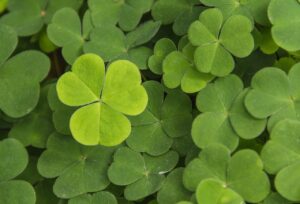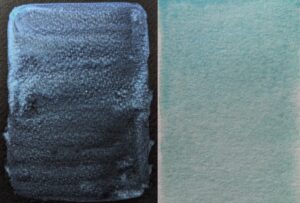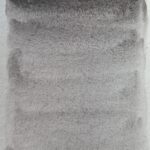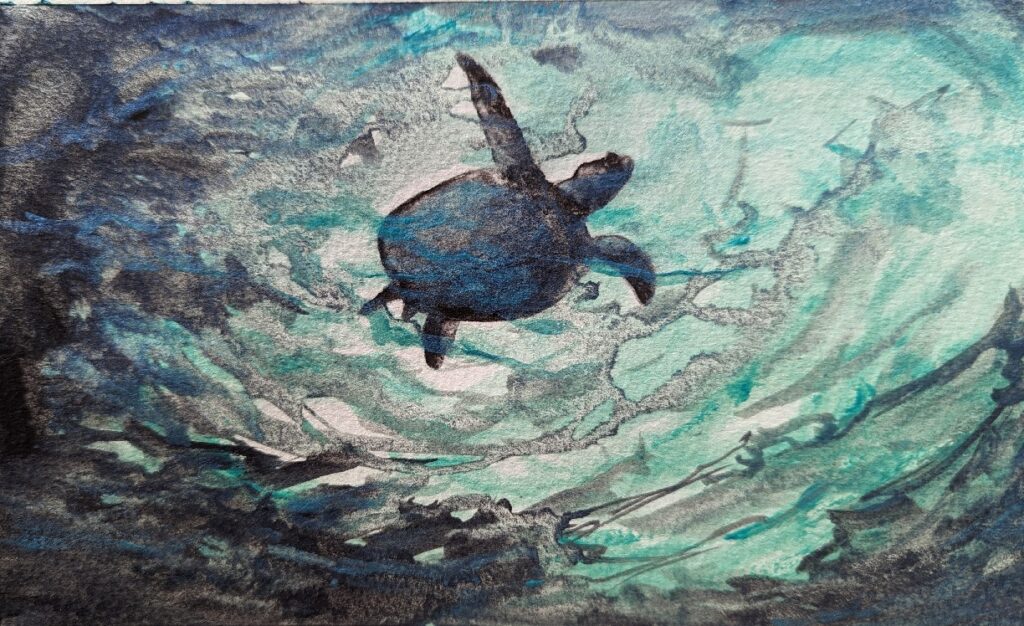
March is the third month of the year and the first month of spring. The name comes from the Latin word Martius, after Mars the Roman god of war. March is a month where fresh greens and clean yellows stand for the emergence of spring flowers and the trees begin to burst into life.
Originally, March was the first month of the old Roman calendar, as the first two early winter months were not given names, as they weren’t relevant to the agricultural cycle. These months were later added as January and February.
 The daffodil is the birth flower of March and also the National Flower of Wales.
The daffodil is the birth flower of March and also the National Flower of Wales.
St David died on 1st March 589 and was canonised in the 12th century. Traditionally, Wales celebrates St David’s Day by wearing the daffodil in his honour. The plant is thought to have been introduced to Wales by the Romans.
Other March flowers can include Forsythia, Lesser Celandine, Marsh Marigold, Scrubby Scorpion-Vetch, Wallflowers and Yellow Corydalis.
 Another Saint celebrated in March is St Patrick, celebrated with gusto on 17th March – with everything decked in green from shamrocks, to decorations and clothing as a celebration of Irish history and culture.
Another Saint celebrated in March is St Patrick, celebrated with gusto on 17th March – with everything decked in green from shamrocks, to decorations and clothing as a celebration of Irish history and culture.
In many parts of the world, March marks the transition from winter to spring, as temperatures begin to rise green shoots emerge from the ground signalling the renewal of life after the dormant winter months. The lush greenery that starts to appear represents new beginnings, growth and the promise of warmer days ahead.
There are also two birthstones for March: the beautiful aquamarine jewel with its pure blue-green colour which embodies the clean freshness March represents as the beginning of spring; and the bloodstone with its speckles of red.
 From the Latin word for water (aqua) and of the sea (marinus) – it’s a common gemstone with a pale blue to light green colour and is a variety of beryl. It symbolises courage, youth and happiness and is steeped in myth and legend. Ancient travellers believed that aquamarine could protect people who were travelling across the sea and as such would often be worn by sailors. The clean, almost flawless, transparent crystal has been used as a jewel since 500BC. The natural green-blue colour can be adjusted by heating in fires, different variations of the colour will be determined on where it was mined, naturally occurring deep-blue aquamarines are the rarest and most valuable.
From the Latin word for water (aqua) and of the sea (marinus) – it’s a common gemstone with a pale blue to light green colour and is a variety of beryl. It symbolises courage, youth and happiness and is steeped in myth and legend. Ancient travellers believed that aquamarine could protect people who were travelling across the sea and as such would often be worn by sailors. The clean, almost flawless, transparent crystal has been used as a jewel since 500BC. The natural green-blue colour can be adjusted by heating in fires, different variations of the colour will be determined on where it was mined, naturally occurring deep-blue aquamarines are the rarest and most valuable.
 When it comes to art, there are many variations of the Aquamarine colour from darker green-blue to a soft, fresh blue-green in varied materials. One of my favourites is the Daniel Smith Duochrome Aquamarine, made from thin mica pigments (PW20 & PW6) which shifts between a soft-blue-green and a shimmering, iridescent blue – depending on the light in which you view it. You can see the shift of colour as you mix on your palette and on a white surface the colour is a soft blue-green, whilst on a black surface it’s a predominantly blue shimmering colour with hints of green.
When it comes to art, there are many variations of the Aquamarine colour from darker green-blue to a soft, fresh blue-green in varied materials. One of my favourites is the Daniel Smith Duochrome Aquamarine, made from thin mica pigments (PW20 & PW6) which shifts between a soft-blue-green and a shimmering, iridescent blue – depending on the light in which you view it. You can see the shift of colour as you mix on your palette and on a white surface the colour is a soft blue-green, whilst on a black surface it’s a predominantly blue shimmering colour with hints of green.
 Bloodstone is also known as Heliotrope – a crystalline mix of quartz minerals whose name derives from the ancient Greek meaning for sun (hḗlios) and ‘to turn’ (trepein); referring to the ancient belief that when placed in water, the stone reflected the sun and caused it to turn red, or that it reflected the colour of blood when exposed to the setting sun. Classic bloodstones are a green jasper with red inclusions of hematite, the deep red of the hematite resembling specks of blood, hence its name. In Medieval times the Bloodstone was used to symbolise the blood of Christ, legend was that the stone was created as Jesus Christ was Crucified and his blood fell upon the jasper at the base of the cross, staining it with the blood red inclusions.
Bloodstone is also known as Heliotrope – a crystalline mix of quartz minerals whose name derives from the ancient Greek meaning for sun (hḗlios) and ‘to turn’ (trepein); referring to the ancient belief that when placed in water, the stone reflected the sun and caused it to turn red, or that it reflected the colour of blood when exposed to the setting sun. Classic bloodstones are a green jasper with red inclusions of hematite, the deep red of the hematite resembling specks of blood, hence its name. In Medieval times the Bloodstone was used to symbolise the blood of Christ, legend was that the stone was created as Jesus Christ was Crucified and his blood fell upon the jasper at the base of the cross, staining it with the blood red inclusions.
 Historically it has also been used as a powerful protective amulet, used in healing practices around the world to attempt to slow bleeding from a wound, prevent haemorrhages and improve circulation. Roman soldiers would carry the stone with them for protection and as a healing aid.
Historically it has also been used as a powerful protective amulet, used in healing practices around the world to attempt to slow bleeding from a wound, prevent haemorrhages and improve circulation. Roman soldiers would carry the stone with them for protection and as a healing aid.
The Daniel Smith Bloodstone Genuine watercolour is one of the Primatek range, made from finely ground genuine Bloodstone to create an intensely granulating black, which as a grey undertone and subtle hint of violet.

Here is a small painting with a view looking up at a turtle created using the Daniel Smith Duochrome Aquamarine and the Daniel Smith Bloodstone Genuine watercolour.
Notifications